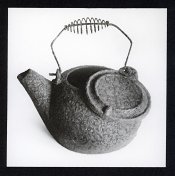Hello folks.
I recently been looking into branching out in Alternative Processes after doing mostly Kallitypes and Salt Prints. I like salt prints for the simplicity of it and it allows me a minimal darkroom space. Kallitypes are a little more involved and require multiple different baths that is a bit messy when I use a single tray workflow. I've been looking at methods of streamlining silver images into a single emulsion, ie no sensitization needed, and naturally fell on silver gelatin emulsions. While I was reading up I stumbled across Collodion-Chloride by Mr. Osterman. Watching the one video series on the process, YouTube, the workflow is exactly what I want to do. With this explanation out of the way I have a few questions.
It is suggested to use Baryta paper or a thick gelatin sizing. I'm not against acquiring my own Barium Sulfate and making up the gelatin emulsion to coat papers (Via the Light Farm formula). From what I understand the compound isn't worse than other pigments I've worked with in oil painting (making my own paints). However, because I am about minimalism what sort of gelatin sizing should I use; if there are alternative, ready-made, papers I can use like Yupo?
The suggested salt to make the silver halide is Strontium Chloride. Would other salts used in emulsion making...well be useable? I guess to simplify the question is does Strontium Nitrate contribute to the process when the emulsion is made?
This next question is more subjective; which process of gelatin based POP and collodion based POP looks good to you in person? Are there any qualities over one compared to the other? etc.
For those that are interested in why I'm choosing Collodion as the colloid. Many of the gelatin emulsions I've come across from royalty free books apparently use active gelatins, which are no longer made. (as stated by PE) Collodion seems to not have changed much from the time nitrocellulose was called pyroxaline.
Anyway, I'm open to feedback on other methodology to create POP, I own Christopher James's book and am familiar with other processes like Albumen. I'm interested in single bath style of sensitizers and preferably tap water washing. Thanks in advanced!
I recently been looking into branching out in Alternative Processes after doing mostly Kallitypes and Salt Prints. I like salt prints for the simplicity of it and it allows me a minimal darkroom space. Kallitypes are a little more involved and require multiple different baths that is a bit messy when I use a single tray workflow. I've been looking at methods of streamlining silver images into a single emulsion, ie no sensitization needed, and naturally fell on silver gelatin emulsions. While I was reading up I stumbled across Collodion-Chloride by Mr. Osterman. Watching the one video series on the process, YouTube, the workflow is exactly what I want to do. With this explanation out of the way I have a few questions.
It is suggested to use Baryta paper or a thick gelatin sizing. I'm not against acquiring my own Barium Sulfate and making up the gelatin emulsion to coat papers (Via the Light Farm formula). From what I understand the compound isn't worse than other pigments I've worked with in oil painting (making my own paints). However, because I am about minimalism what sort of gelatin sizing should I use; if there are alternative, ready-made, papers I can use like Yupo?
The suggested salt to make the silver halide is Strontium Chloride. Would other salts used in emulsion making...well be useable? I guess to simplify the question is does Strontium Nitrate contribute to the process when the emulsion is made?
This next question is more subjective; which process of gelatin based POP and collodion based POP looks good to you in person? Are there any qualities over one compared to the other? etc.
For those that are interested in why I'm choosing Collodion as the colloid. Many of the gelatin emulsions I've come across from royalty free books apparently use active gelatins, which are no longer made. (as stated by PE) Collodion seems to not have changed much from the time nitrocellulose was called pyroxaline.
Anyway, I'm open to feedback on other methodology to create POP, I own Christopher James's book and am familiar with other processes like Albumen. I'm interested in single bath style of sensitizers and preferably tap water washing. Thanks in advanced!







